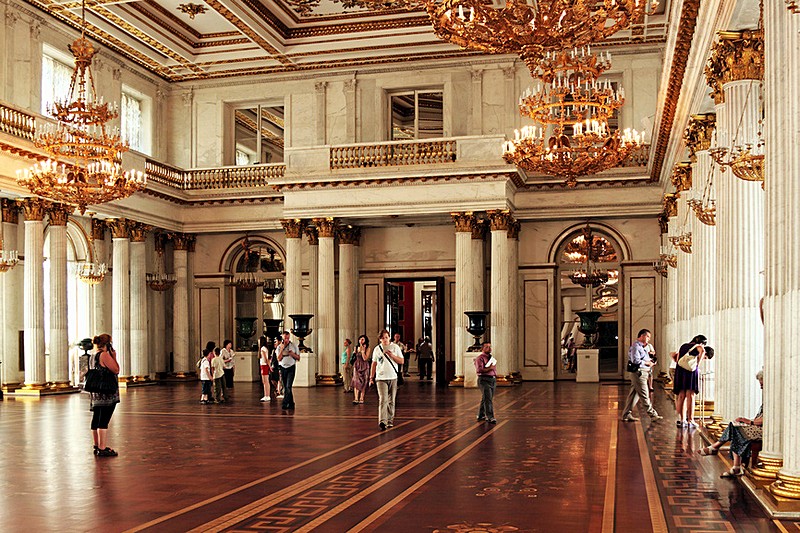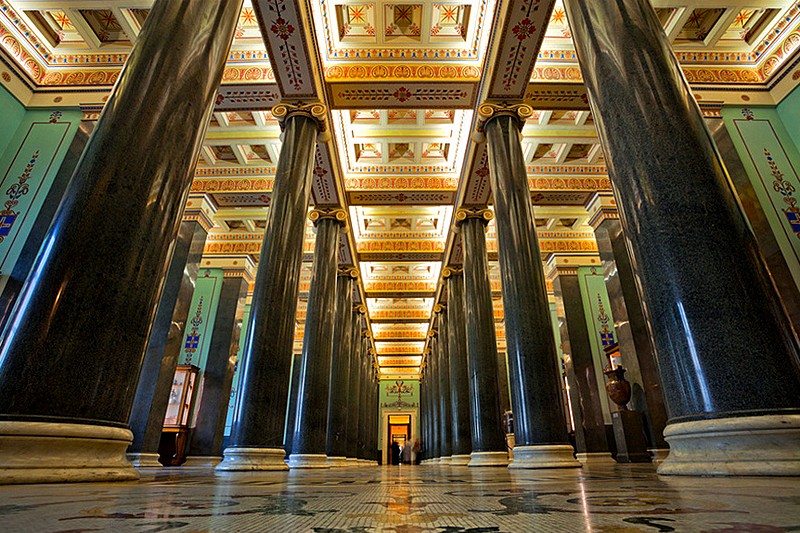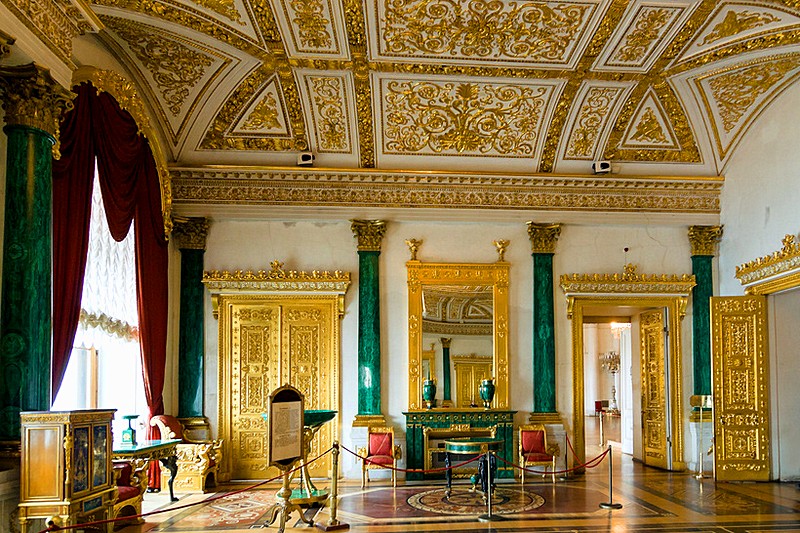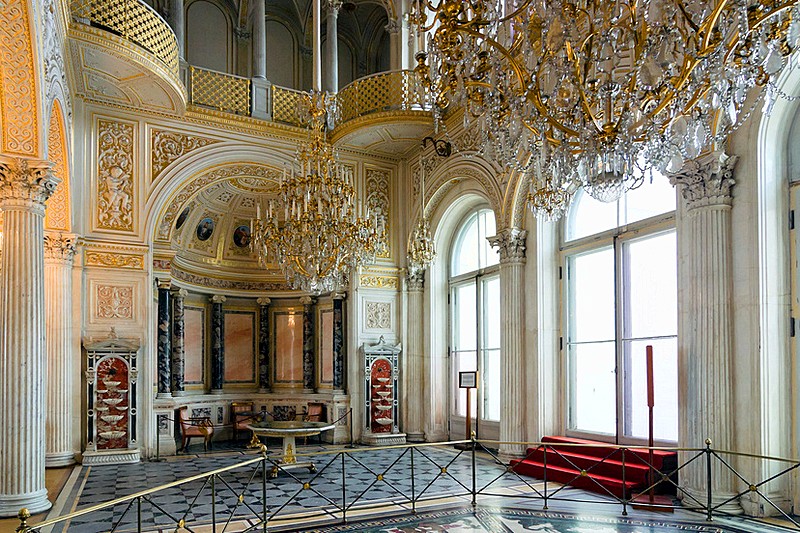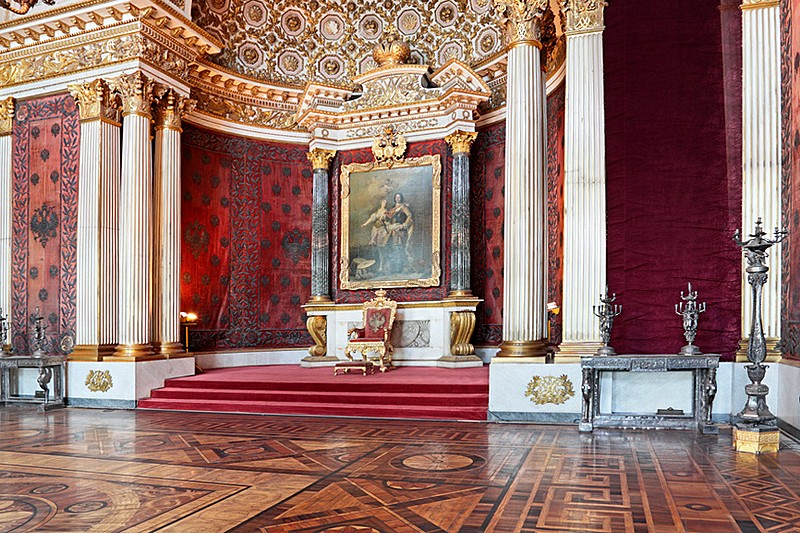State Rooms
Normally the first destination for visitors to the State Hermitage Museum, the State Rooms on the first floor of the Winter Palace are accessed by the Jordan Staircase, to the right of the main visitor entrance. Reflecting the remarkable wealth and extravagant tastes of the Romanov Tsars, the State Rooms have witnessed some of the most significant events in Russian history, and provide a fascinating glimpse into the rituals and ceremonies of the Imperial Court.
Designed and decorated for the most part by the court architects who built the Winter Palace and its adjacent buildings, including Bartolomeo Rastrelli and Giacomo Quarenghi, the State Rooms owe their current guise to Vasiliy Stasov, who was responsible for their restoration after a major fire in 1837, and whose strict neoclassical tastes went some way to toning down the rococo excesses of his predecessors.
Most visitors will enter the Hermitage displays via the splendid Jordan Staircase, which leads them to the east wing of the Winter Palace, and the rooms known as the Great Enfilade. These are some of the most majestic spaces in the Hermitage, rich with the symbolism of Imperial Russia and its military might. Featuring white walls, neoclassical columns, rampant gilt decoration, and beautifully varied parquet floors, they include the spectacular Armorial Hall, with its large stucco warriors and ornate chandeliers, and the Hall of St. George, the palace's main throne which measures 800 square meters. The Small Throne Room is dedicated to Peter the Great, with wall coverings of deep red velvet embroidered with the Romanov eagle. The 1812 Gallery, meanwhile, celebrates Russia's victory over Napoleon, and was modeled on the Waterloo Chamber at Windsor Castle. It features rows of portraits of Russia's military commanders, crowned by vast equestrian portraits of Alexander I and Frederick Wilhelm III of Prussia. The Grand Enfilade also contains the Winter Palace Cathedral, the Tsars' private chapel, with its soaring domed ceiling, and the splendid, pale-blue Alexander Hall, which was also designed to celebrate victory in the Napoleonic Wars.
The rooms of the Neva Enfilade, which runs west from the Jordan Staircase, have spectacular views across the river to the Strelka on Vasilevskiy Island, and the highlights among them are the Malachite Drawing Room, decorated for Alexandra Fedorovna, wife of Nicholas I, using over two tones of Ural malachite, the Nicholas Hall, which was used as the palace's main ballroom, and the Gallery of Russian Tsars, which contains multiple portraits of all the Romanov Emperors.
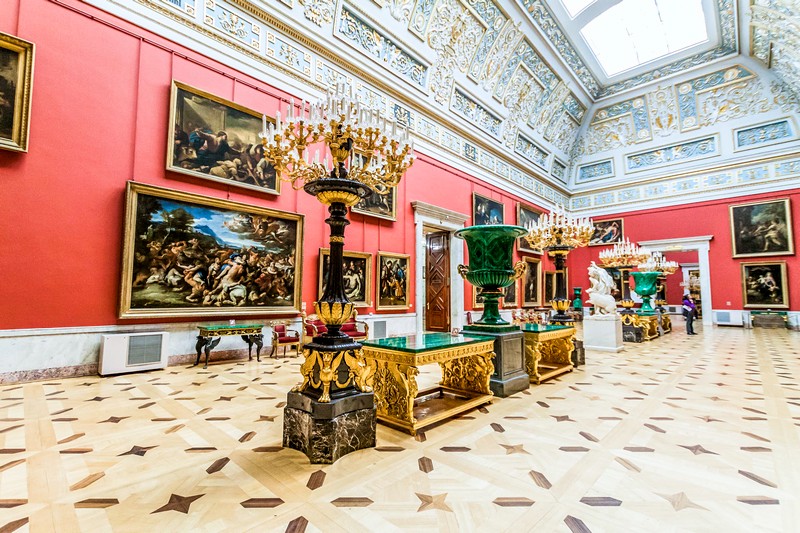
Although this is more than enough to overwhelm most visitors, the Hermitage also features a nearby display entitled Russian Palace Interiors of the 19th Century, which features recreations of the Winter Palace's more private rooms, including Nicholas II's Gothic Library and the charming, Russian Empire Music Room. At the southwest corner of the Winter Palace, a further cluster of rooms has been preserved, amongst them the incredibly extravagant Golden Drawing Room, a pastiche of traditional Russian styles that leaves barely an inch ungilded.
Many other rooms in the Hermitage feature beautiful - arguably more tasteful - interior decoration, but for a picture of the Russian Empire at its most grandiose extravagant, they are not to be missed.

